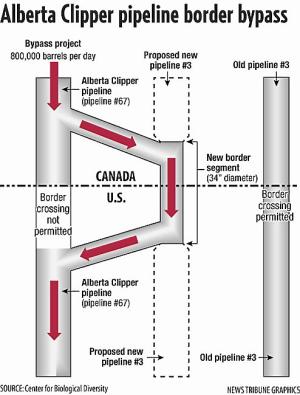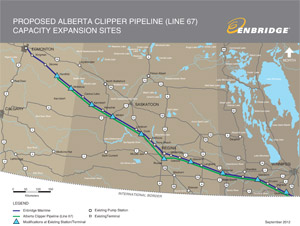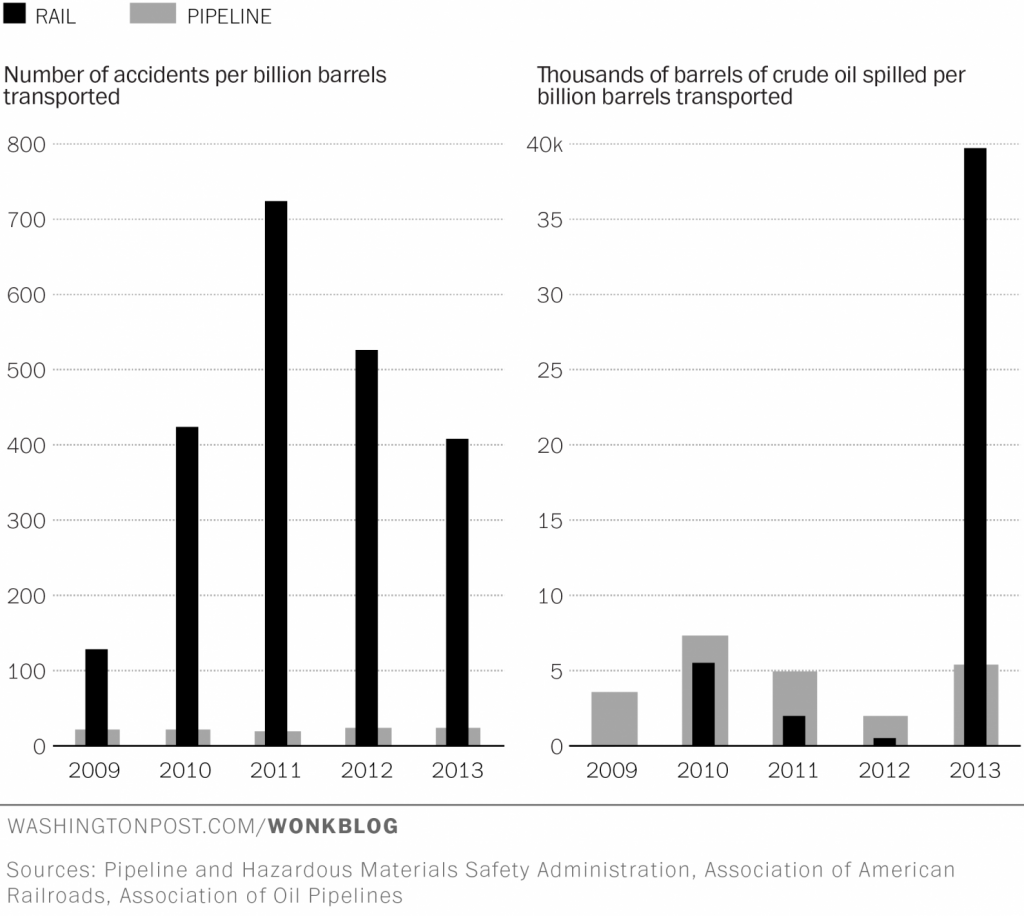Following judge’s confirmation of Enbridge’s legal authority to carry out 430 MMBOPD Alberta Clipper expansion
U.S. District Judge Michael Davis in Minnesota rejected key parts of a lawsuit brought against Enbridge Inc. (ticker: ENB) over the expansion of the company’s Alberta Clipper pipeline. Environmental groups, including the Sierra Club, and tribal groups sought to stop the expansion of the Alberta Clipper, saying it threatens ecologically sensitive areas in northern Minnesota.
Currently, The Alberta Clipper carries about 450 MBOPD across the border, but Enbridge would like to increase the pipeline’s capacity to 880 MBOPD. Because of the size of the volume increase, the expansion requires a federal review.
Last year, Enbridge upgraded a portion of its Line 3 where it crosses the U.S.-Canadian border to allow it to carry more oil sands crude into the U.S., and serve as a detour for crude on the Alberta Clipper pipeline. Enbridge plans to keep this arrangement in place until it receives approval for expanding the capacity on the Alberta Clipper where it crosses the border.
 The environmental coalition sued Enbridge, saying that the U.S. State Department should not have allowed the company to build a temporary workaround to move more oil sands across the border pending the final federal review of the Alberta Clipper. Judge Davis, concluded the letters the State Department sent were not the kind of final decisions that the courts have jurisdiction to review, and countered that Enbridge already had the legal authority to proceed under its existing permit.
The environmental coalition sued Enbridge, saying that the U.S. State Department should not have allowed the company to build a temporary workaround to move more oil sands across the border pending the final federal review of the Alberta Clipper. Judge Davis, concluded the letters the State Department sent were not the kind of final decisions that the courts have jurisdiction to review, and countered that Enbridge already had the legal authority to proceed under its existing permit.
Following the decision from the federal court, the plaintiffs said they would consider appealing the decision after reviewing the court’s verdict, and they hoped that President Obama might initiate a review of the project, shutting it down in much the same way he did with TransCanada’s (ticker: TRP) Keystone XL pipeline.
“Now, just as he did with Keystone, President Obama can call for a full review of Enbridge’s plans and ultimately reject a pipeline expansion that would do irreparable harm to our climate, our environment, and our public health,” said Lena Moffitt, director of the Sierra Club’s Beyond Dirty Fuels Campaign.
Politics killing pipelines – why?
President Obama official announced that he would reject the Keystone XL pipeline after seven years of regulatory limbo on November 4 of this year. The decision came as the president looks to solidify his environmental legacy during his final year in office.
Keystone XL became a national political lightning rod during its seven years of federal and state permitting activity, route changes, engineering design, environmental studies and legal actions. But during the same period more than 8,000 miles of oil transmission pipelines were constructed from 2009 to 2013 alone, which is nearly ten-times as much as the 875 mile TransCanada pipeline.
Association of Oil Pipe Lines (AOPL) spokesperson John Stoody pointed out the inconsistencies following the announcement that Keystone XL would not be moving forward. “While people have been debating Keystone in the U.S., we have actually built the equivalent of 10 Keystones,” he said. “And no one’s complained or said anything.”
In an exclusive interview with Oil & Gas 360®, Colorado Governor John Hickenlooper said, “I’m a big believer that pipelines are less expensive and clearly safer. And I have had discussions with legislators and people at the White House, trying to find a way that the Keystone pipeline would make more sense, that they could be persuaded. … on a general basis I think pipelines make a lot of sense–again, much less expensive, much safer, cleaner, better for the environment. We support them.”
[email_signup label=”Sign Up for Closing Bell – our Free, End-of-Day Oil & Gas News Report”]
While the fight over highly politicized projects like Keystone took place, crude oil pipeline mileage rose 9.1% in the last year alone, according to AOPL. And as 2016 presidential hopefuls like Hillary Clinton and Bernie Sanders continue to push for fewer pipelines, the amount of Canadian crude oil exports to the U.S. continues to grow, with a record 3.4 MMBOPD reported in August. On the other side of the aisle, Republican candidates Jeb Bush and Ted Cruz both favored the Keystone XL and other pipelines.
One way or the other, the oil will move between Canada and the U.S., and rail is the alternative transport method in the absence of a pipeline. Earlier in 2015, the Washington Post compared the spills for each shipping method. Here is the newspaper’s analysis:
“It’s abundantly clear that the rate of accidents per billion barrels is significantly higher for rail, and it also fluctuates more year to year. Pipelines see a pretty steady 22 or so accidents per billion barrels of oil transported. In recent years, the rate for rail-transported oil is 10 to 20 times higher than that. But the rail accident rate is falling, suggesting that railroads are starting to make the safety investments necessary to deal with the huge increase in oil business the industry has seen since 2010 or so.”


